About Heat Stroke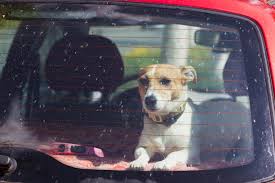 Heat Stroke occurs when your pet's body cannot dissipate excess heat as fast as is required to maintain a normal body temperature. This can occur because your pet is generating excessive heat due to exercise or anxiety or is exposed to high temperatures in their environment, or a combination of both. Cats and dogs are susceptible to heatstroke because they can only regulate their body temperature through panting or sweating from their foot pads. A pet that is left in a poorly ventilated area, unable to avoid direct sunlight, or without access to water, such as in a car or shed can quickly succumb to heatstroke. Very often we may not be aware of the fact that a pet has become overheated until symptoms suddenly develop. For example dogs are always very eager to please their human and will often continue playing or exercising until their bodies cannot take anymore. Heat stroke in our pets is a very serious condition and its onset can be sudden, escalating into an emergency situation in a matter of minutes. Knowing how to treat a pet experiencing heat stroke may be vital to saving your their life. Recognizing Heat Stroke Symptoms
What to do on a hot day with your pets.
What Heat Stroke can do to your Pet
Excessive anxiety may also contribute to susceptibility of Heat Stroke Useful tips
1 Comment
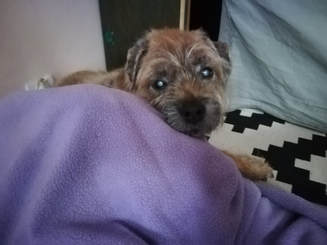 I have recently looked after a blind dog called Lupo (photo) Lupo has been coming to stay with me for over 5 years. He went blind recently due to diabetes and March 2018 was his first time to come and stay with me as a blind dog. I have been very honored to see many of my pets come back to me year after year for pet care/sitting, and, because of this, I have seen them age, I have seen changes in their health, I have seen them put on or lose weight and I have been able to advise on health care and thus prevent more serious health situations from arising. 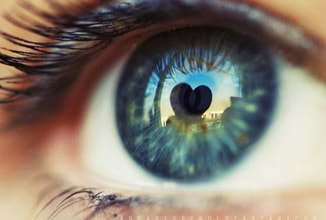 And so, with Lupo in mind, and including my observations over the years, I would like to write about the importance of investing in your pets with an eye for the future. This will decrease the stress in your life, be more efficient in cost and time and overall increase the life expectancy of your pet. Here are some suggestions:
One of the things Lupo’s human has done on this list for the future is to invest in the same petsitter. Lupo and I love each other and Lupo is very familiar with my flat and routine. For this reason his transition to my flat over Easter, as a blind dog, was seamless. Here is why:
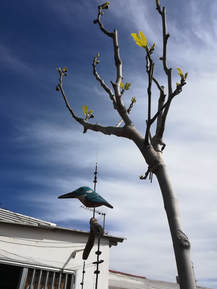 We are now in Spring 2018 and my first blog on this website was in Spring 2011! In the last 6 months with the help of my wonderful web designer and my marvelous marketing strategist my website has been the object of a major spring clean. Cobwebs swept away and the windows are washed clean. Fidos Playground has a Philosophy, a Vison and a Mission Statement and in May 2011 i wrote a blog to share with you the qualities that I wanted as the backbone to our Pet Sitting Care. This Spring of 2018, with a lot more experience under my belt I would like to take this opportunity to refresh the philosophies behind Fidos Pet care. Over the last 7 years I have come to a crystal realisation that my personal passions lie in animal communication, health management, care and human relations.  My first teachers of animal care were from the animals themselves. As owner of a Dairy farm in Zambia i had the opportunity to work with milking cows, horses, dogs and cats in a harsh environment with (in the beginning) little access to veterinary advice. By the time i reached Barcelona in 2007 i already had 15 years of experience in animal health and care. My second teacher was 'The Monty Roberts International Learning Centre', in California, where I learnt the art of communicating with horses in a discernible and effective way, using predictable body language. This language Monty Roberts created after extensive observation on wild Mustangs in Nevada at the age of thirteen. He calls it ‘Equus’, and it is silent, encouraging true partnership between horse and human. This method rejects the traditional and violent methods of ‘breaking in’ a horse and replaces it with the nonverbal, silent and nonviolent ‘Join Up’. My third teacher was Jan Fennell ‘The Dog Listener’. She was initially inspired by Monty Roberts. Jan resolved to find a similar way to communicate with dogs by also rejecting the traditional methods of dominance and force. She did this by studying wolves, wild dogs and coyotes. This study has resulted in the application of a training system she has called ‘Amichien® Bonding’. This method of 'dog training' allows you to live in harmony with your trusted friend. It is a non-confrontational, stress-free, and gadget-free method. 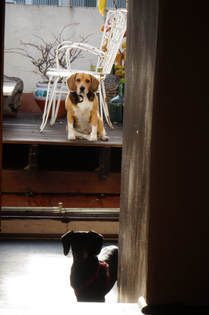 My fourth teachers have been the animals and their human companions in Barcelona who have given me the opportunity to create and grow in the pet care business. Through my work I have been able to observe intensively how our animals may communicate with eachother and with humans; i have improved on my knowledge of animal health and care management, and I have learnt and am still learning, the art 0f clear, compassionate communication in all areas of my business and personal life. The concepts behind ‘Equus’ and ‘Amichien Bonding’ are similar to all species. It is important to understand how each species uses its senses to perceive and interpret its environment. It is important to observe how each species brings up its young babies; how they encourage and advise their teenagers and to how they then settle into adulthood and old age. Throught this knowledge we have the tools best equipped for the personal comfort of our pets. Through our animals' guidance we can become better humans. We can learn how to connect with a compassion that comes from the heart and not the human mind. This type of love can cross any language and species barrier. Meet Raki. Before he was adopted off the streets of Istanbul, he had a life very similar to the story I am about to tell you. Raki's human took "a loving" to him and invited him to jump into the boot of her car when she drove passed him on the street. He eagerly obliged and that was the start of his new life in heaven where he could find warmth, foooooood and big love. Here at Fidos Playground he is our lovable clown, adored by each of us. Picture this ..... It is estimated that there are 2 million stray cats in Istanbul and around 150,000 stray dogs. Your eye can't help but notice the animals. Street animals have been a part of Turkish culture for generations, and many Istanbul residents believe they have as much right to inhabit the streets as people. Dogs and cats are allowed to roam the streets while the Municipality, residents and local shop owners look after them in a collective effort. "These are the neighborhood's dogs," says Hamit Yilmaz Ozcan, as he sits with Chico, an elderly Alsatian, and Hercule, his younger, rust-colored companion, two strays that reside near his clothing shop in the neighborhood of Cukurcuma. 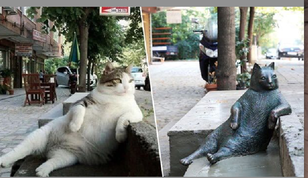 Some animals even become local celebraties like Fatso the cat. When he died the neighborhood collected money to build him a statue.
Does this happen everywhere in Turkey? The municipalities are all charged with the care of the animals but the quality of life for the animals varies greatly, depending on how much spare money the municipality has, to allocate to their care. Istanbul has more money available and so the animals have housing and veterinary treatment. Care and interest of the animals can also vary within certain areas of Istanbul. NOTE!! If you get caught killing an animal in Turkey there is the possibility of a 10.5 year prison sentence To end the story of Raki and the stray dogs and alley cats of Istanbul, we finish with this cat celebrity called Gli. He is a devout cat living at the 1,475 year old museum of the Hagia Sophia. He is squint eyed, with one eye on God and the other on the Devil. He greets all the tourists and supervises the employees. He was even visited by Barack Obama.
What is declawing? Feline declawing is an elective and ethically controversial procedure, which is NOT medically necessary for cats in most instances. Declawing entails the amputation of a cat’s third phalanx [P3], or third ‘toe bone.’ Unlike human nails, cats’ claws are attached to the last bone in their toes. A comparison in human terms would be cutting off a person’s finger at the last joint of each finger. It is important to understand that scratching is normal behavior for cats, and has an inherent function. Cats scratch to:
Alternatives to declawing 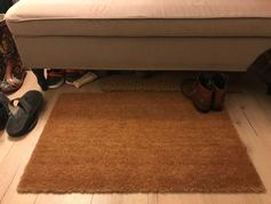 Scratching posts/pads Provide your cat with suitable ‘scratchers’ where they can exhibit normal scratching behavior. Scratchers come in multiple styles and textures. It is important to experiment with a variety of textures and types of scratchers to determine which your cat prefers. Some examples I have come across include:
The placement of scratchers is very important.
Kittens and cats can be trained to use scratchers by rewarding use of the scratcher with the cat’s favorite treat. A spray bottle of water nearby can be useful if used with calmness and no dramatics. Cats should always be positively reinforced and never punished. Regular claw trimming Regularly trimming your cat’s claws can prevent injury and damage to household items. Proper feline nail trimmers should be used to prevent splintering of the claws. The frequency of claw trimming will depend on your cat’s lifestyle. Indoor cats, kittens, and older cats will need more regular nail trims, whereas outdoor cats may naturally wear down their nails requiring less frequent trimming. If possible, start trimming as kittens so they become comfortable with the process early on. This method of teaching early is called imprinting. If your cat does not like claw trimmings start slow, offer breaks, and make it a familiar routine. Ask your veterinarian for advice or a demonstration on trimming your cat’s claws. Always trim claws in a calm environment and provide positive reinforcement. Continued scratching by cats may be related to stress, anxiety, attention seeking, or a perceived lack of security in their environment. Anxiety can also be intensified by punishment, thus driving the cat to increase scratching behaviors in the same or other undesirable locations in the home. Feliway® the synthetic pheromone can be bought as a bottle of liquid and plugged into your wall. The heat generated by the plug slowly evaporates the pheromone into the atmosphere. In many of my experiences Feliway has had a positive effect in decreasing anxiety and stress. The pheremone is also undetectable to human noses.
It can also help spraying Feliway® on the objects or areas in your home where your cat has exhibited undesired scratching. Remember to do this after cleaning the area with bio soap and water, to remove the communication marking scents left by your cat’s paws, otherwise the cat will only return to the same place again and again. Applying daily comforting pheromones can prevent your cat’s need to mark these areas again. Feliway® should NOT be sprayed on the desired scratcher. Providing your cat with an environment that is enriching is vital to teaching your cat to scratch on appropriate objects. Destructive scratching can occur in cats because their needs have not been fully met. Cats need the proper resources to perform their natural behaviors and have control over their social interactions. You can enhance your cat’s health and well-being by ensuring all their needs are met in the home. Great sites with lots of wonderful cat information: www.catvets.com/ http://www.adventurecats.org/ Shops with cat goodies: https://www.tiendanimal.es/rascador-esquinero-protector-pared-para-gatos-p-5532.html Kiwoko, Barcelona 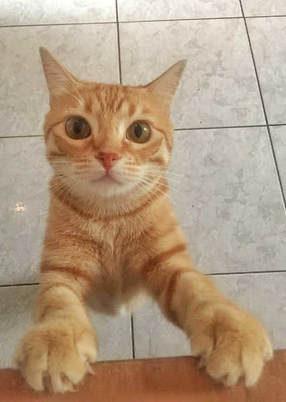 Often in conversation about pet sitting cats, someone will mention that our feline companions need very little care, that they are independent, aloof and can very nearly look after themselves. I don’t believe this is the case, whether they are indoor or outdoor cats. (photo) I read a heading in a blog titled “Quiet lives of Desperation”. What a sad but true heading! Cats suffer very quietly. A cat without stimulation or interaction can suffer from stress through boredom and depression. This stress will show itself through less obvious problems such as obesity, a depressed immune system leading to infections (such as a urinary), or it can show itself more obviously through behavioural changes such as aggression, over grooming and soiling outside the litter tray. It’s important to visit your veterinarian to rule out any medical issues that could contribute to the problem. Once your cat gets a clean bill of health, you can look into ways to enrich his environment to meet his physical, emotional and social needs. Here are some suggestions. Interaction Cats may have set ideas about how they want to interact, but, it is important to set time aside for this to happen. Each cat personality is different, so it is important to explore with your cat (without expectations), to find out what it likes. Through our pet sitting experience we know that cats love to play hide and seek, to be groomed with a hand held hoover, hunt the string, chase the ball, they can be trained to a harness and go out for walks on top of terraces or into the wild (see this website), they can be taught to fetch a ball and more.
Set up a routine where this precious time is available to your cat 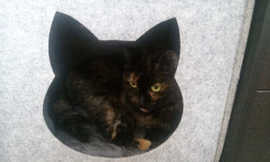 A Safe retreat Cats need a safe place where they can snooze uninterrupted; they need to escape from the other animals, from children and strange visitors. They love to perch on high vantage points or slip into deep, dark corners where they can see you but you cant see them! Make spaces available to them, or build little dens. See zooplus.es for some ideas. Or make beds on top of shelves where they can look out the window or feel the sun or a breeze The basics
Captivate their senses Cats are especially interested in scents, so consider using catnip or synthetic pheromones in your house. Or provide some pet-safe grasses for your cat to nibble on. Explore aromatherapy oils, and cats love plants. For auditory stimulation, consider leaving the radio on or playing a CD made for cats while you’re gone. Cats love classical music and there are even DVDs with birds and other prey to keep your cat entertained. (video) Every cat is different, so you may need to try different enrichment strategies until you find what’s best for your cat. A few small changes around the house can help make your cat happier and create more harmony when multiple cats are sharing a house. 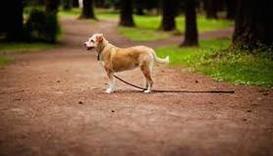 Losing your pet causes a lot of anxiety and stress. It is hard to think calmly and be proactive. Here are some important points to remember to make your search easier.
The experiences told to me by clients
Anal Glands in Cats and Dogs What are Anal Glands?
Anal glands are pea sized sacs found on either side of your dog or cat's anal opening, at the 8 and 4 o’clock positions. They are paired glands located just below the surface of the skin and were designed by nature to produce a thick, foul-smelling, oily liquid secreted for identification and territory-marking. For the wild animal these glands also act as a powerful deterrent when it is in danger. The animals will voluntarily exude the goo from the glands, which causes the predator to stop, smell and re evaluate its situation. Skunks hold the prize for having the most foul smelling anal glands when in fear. For the domestic animal on the other hand, the glands serve less of a function and they have largely lost their ability to empty their glands voluntarily. Who's Who? This scent from the anal glands is used as a place marker, a communication device, and a personal ID card. This is why dogs smell other dogs bottoms to see who's who, and, why cats pay special attention to poop in the same place. How do they work? Passing normal firm stools puts natural pressure on the rectum walls causing the glands to squeeze out their contents and coat the stool with its distinctive and unique smell. The glands will, to some degree, also help to lubricate the anal opening in the process, making it easier for your dog or cat to poo. Dogs empty their anal sacs involuntarily and normally when under stress. You may have experienced this when visiting the vet with your dog. In its anxiety it has let rip (literally) the fluid from its anal sacs. Not a pleasant smell or situation for all involved in the scent shower. What are the problems? The anal glands are one of the anatomical areas where cats have it all over dogs. It’s unusual for a cat’s anal glands to become impacted, inflamed or infected. Dogs on the other hand are more commonly unable to fully empty their glands on their own, causing the glands to become impacted and uncomfortable. Impaction results from a blockage of the duct leading from the gland to the opening. This can be non-painful but swollen causing irritation, or painful, if an infection is involved resulting from prolonged impaction, causing the glands to build-up nasty bacteria resulting in pain, increased swelling, and sometimes a fever. A very painful condition requiring urgent veterinary treatment. Signs that your dog or cat may have a problem with their anal glands
Anal glands fill up for a number of reasons.
What is the treatment? Treatment is usually by expression of the gland by your veterinarian, or involves antibiotics and pain relief. The glands may need repeated flushing. Anal glands can be flushed at home, but this process can be extremely dangerous if done incorrectly. It is always recommended to get vet advice before emptying glands yourself. Information taken from www.vetstreet.com, vetadvice, www.marcthevet.com and my own personal pet sitting experiences.
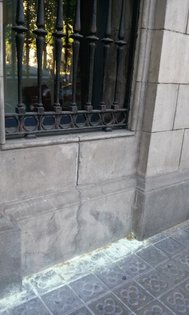 As you walk around Barcelona you may have noticed the yellow powder that is sprinkled outside some shops or buildings. This yellow powder is Sulphur and is supposed to repel dogs from peeing in that particular spot. In Malaga according to Sur.es, the Ayuntamiento have imposed a fine of between 75 and 500 euros if shops or residences sprinkle it outside their buildings. This new law comes into effect this month - April 2017. At the moment there seems to be no definite evidence that Sulphur is effective in repelling dogs from peeing in certain areas. I cannot comment on whether this tactic works or not, but I do think that the sulphur makes the outside of buildings look very ugly! Sulphur can harm your dog if ingested in large quantities, inhaled in large quatities, or if the dog's skin is exposed to it directly. In my travels around Barcelona i have not heard of any dog being affected by the sulphur powder. It is not tasty enough! Sulphur is a product used in horticulture to prevent plants from insect damage. Wouldn't Sulphur cause more irritation to humans if picked up by the wind and inhaled? Pee-mails Once a dog has urinated in one spot, the urine acts as a 'peemail' to other dogs, informing them of their breeding status, health and a wealth of other very useful information. These spots then attract other dogs who also want to broadcast their status. If a dog has weed indoors then they will return to the same spot to reinforce the message that the previous smell already contains. Do we use bleach to clean up urine stains? Animal urine contains ammonia amongst other ingredients. Bleach contains an ingredient that reacts with the ammonia in the urine breaking up the molecules and creating toxic gases, but, in the process this chemical reaction also strengthens the smell of the stained spot which broadcasts a stronger and more insistent message to other dogs, to come and wee in the same spot. The same thing happens if the dog urinates indoors. It will return to the same spot to reinforce any diluting messages. What is the best way to clean up urine stains? Here are some suggestions
For cleaning the outside of buildings, a mixture of vinegar and water in a bucket with a good brush will suffice. |
Sign up for our newsletter
Archives
June 2020
Categories |
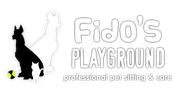
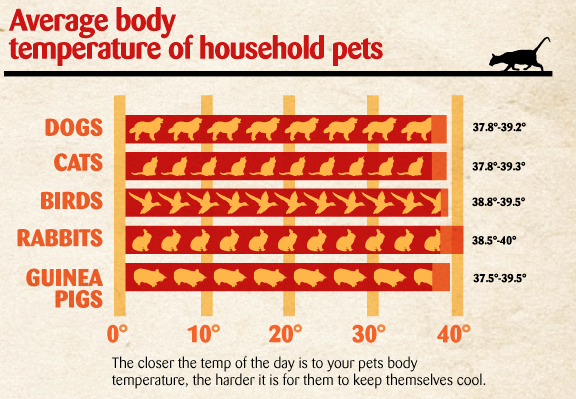
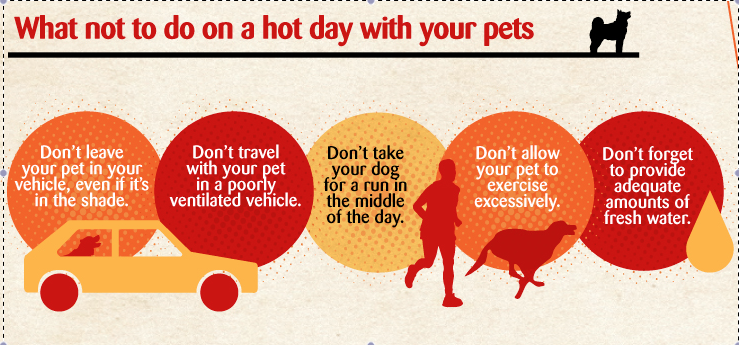
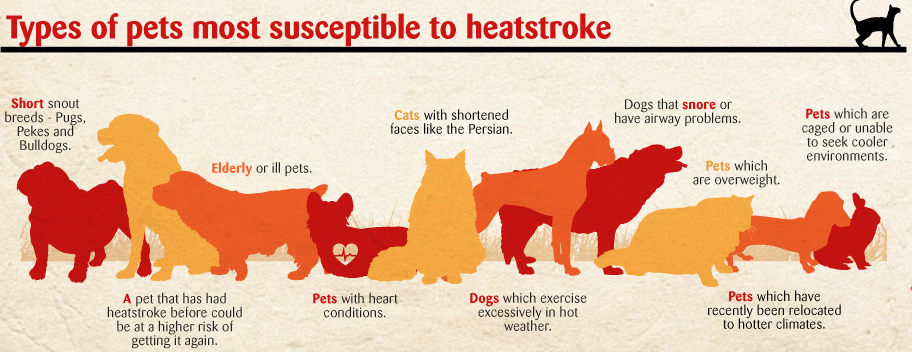
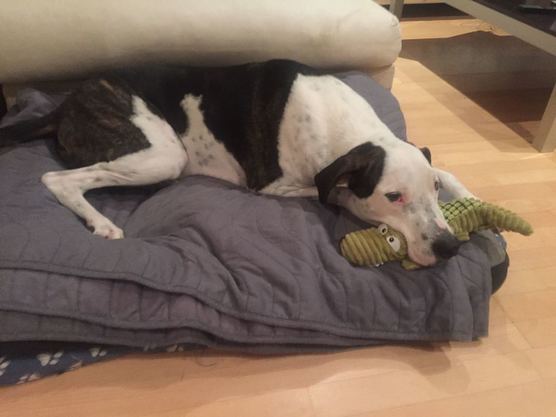
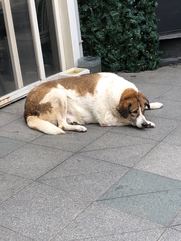
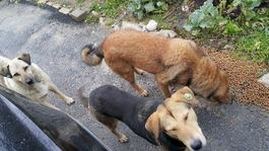
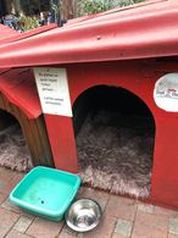


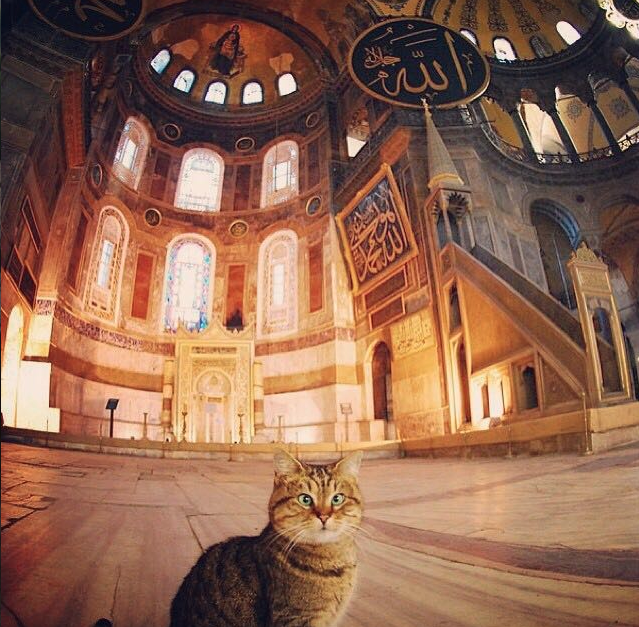
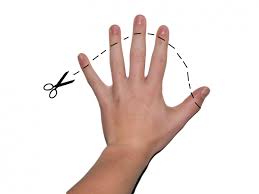
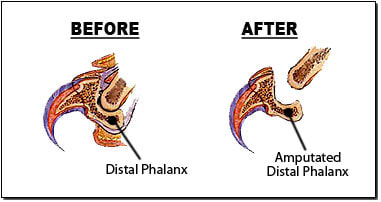
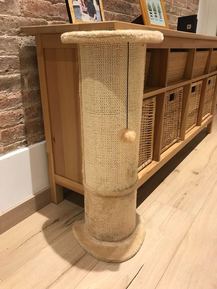
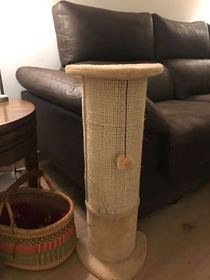
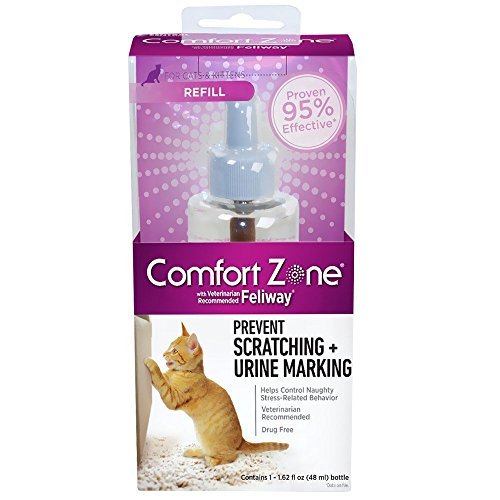
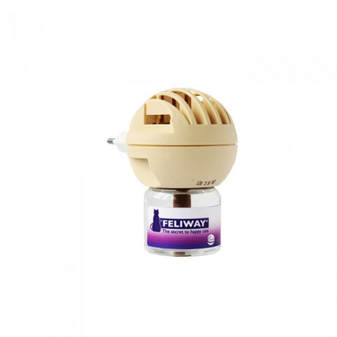
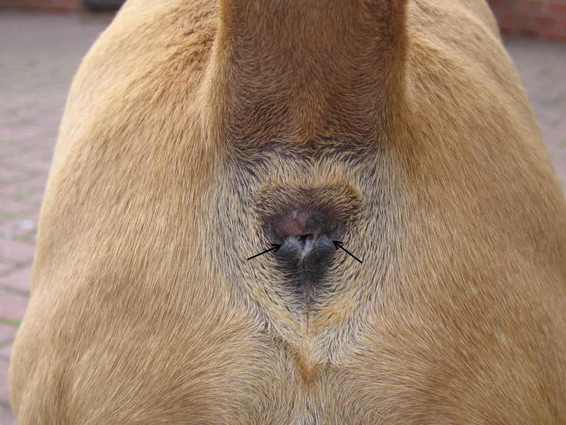

 RSS Feed
RSS Feed